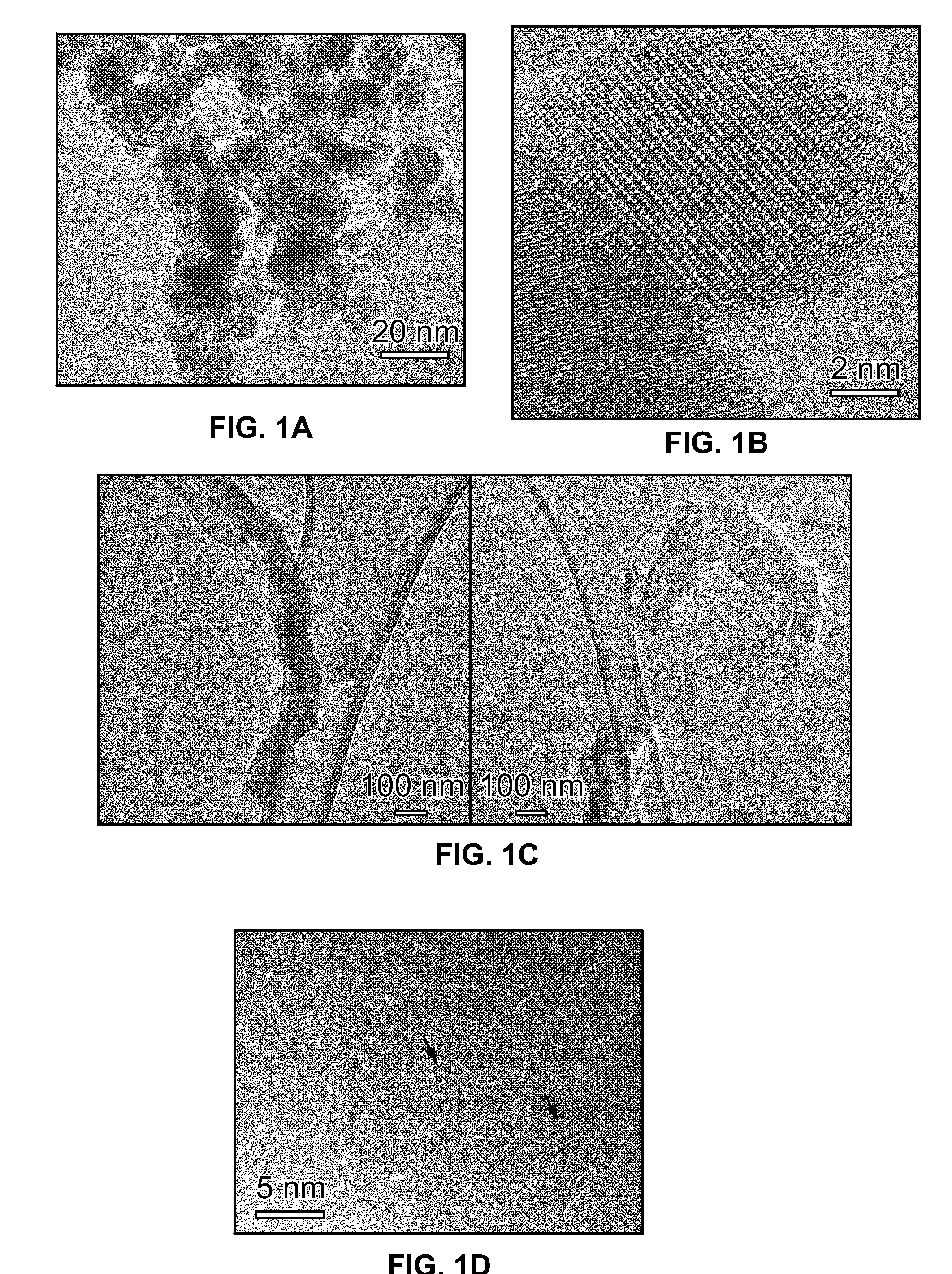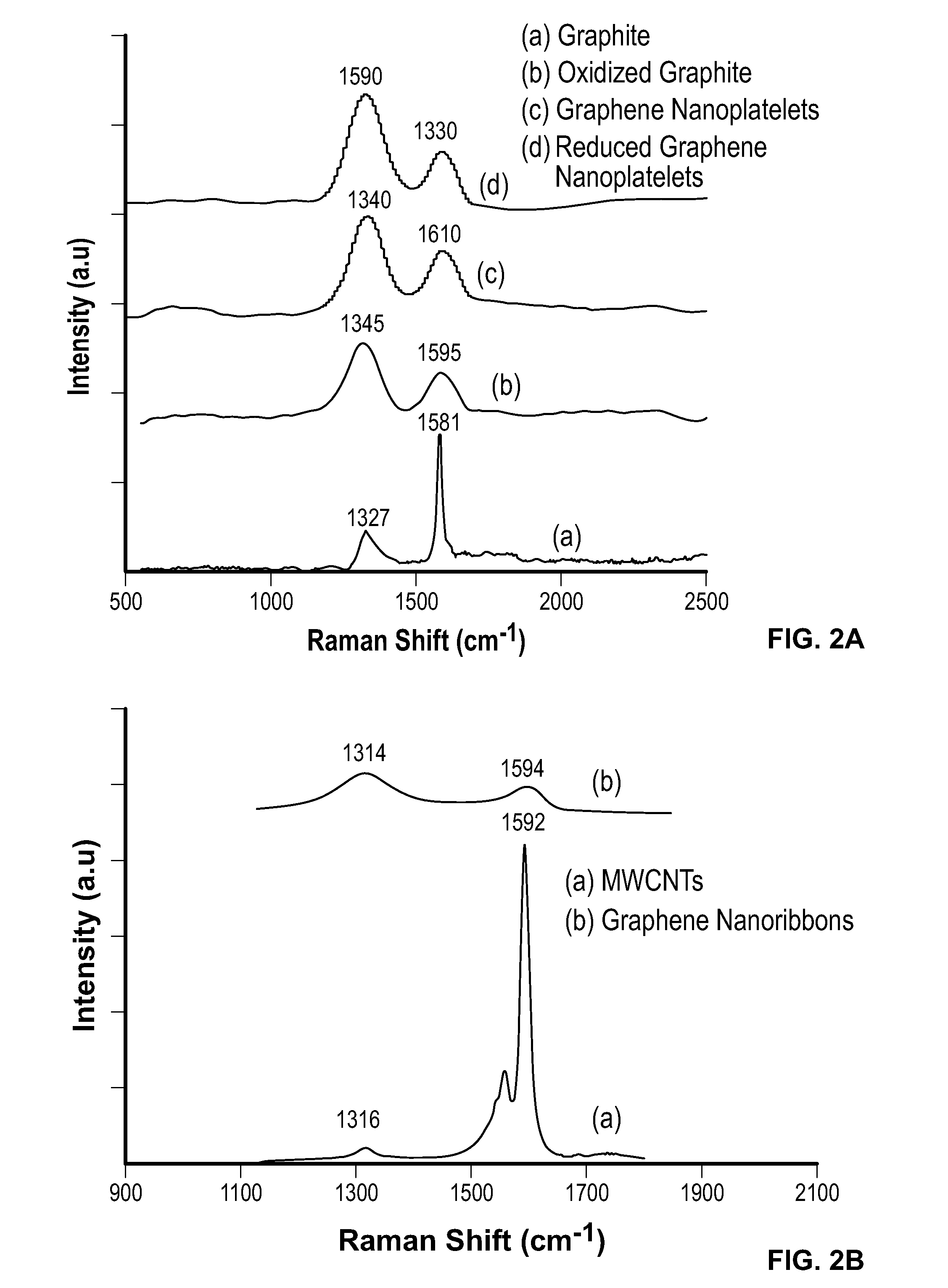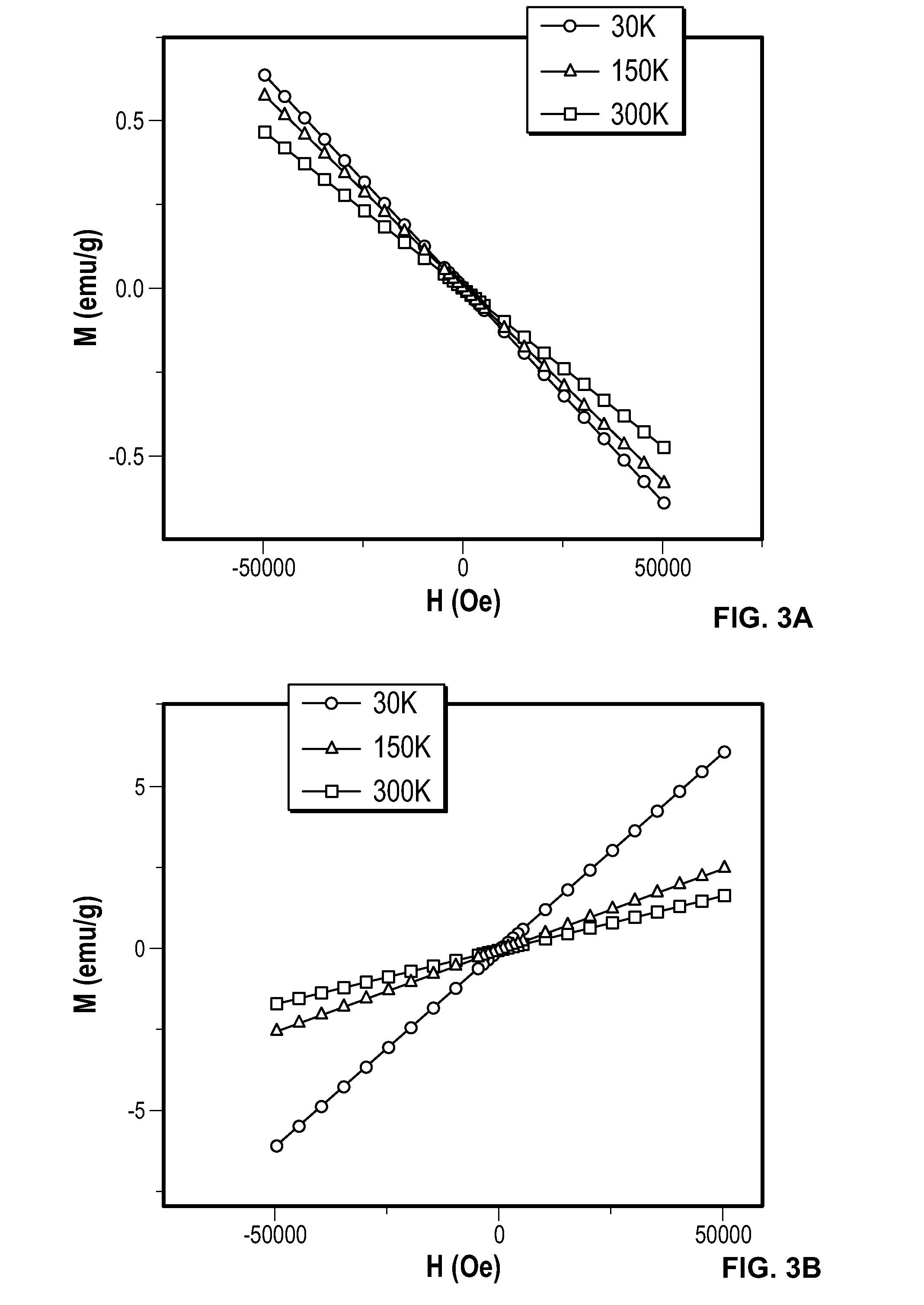Magnetic graphene-like nanoparticles or graphitic nano- or microparticles and method of production and uses thereof
a technology of graphene-like nanoparticles and graphene-like nanoparticles, which is applied in the field of magnetic graphene-like nanoparticles or graphitic nanoor microparticles and their production methods, and can solve the problems of unexplored potential and efficacy of mnsup>2+/sup>-ion carbon nanostructure complexes as mri cas, and the ion system of carbon nanostructure-gd
- Summary
- Abstract
- Description
- Claims
- Application Information
AI Technical Summary
Benefits of technology
Problems solved by technology
Method used
Image
Examples
example 1
Materials and Methods
[0082]Graphene Nanoplatelet (GNP) Synthesis:
[0083]Oxidized graphite was prepared from analytical grade micro-graphite (45 μm, 496596-Sigma Aldrich) by modified Hummer's method (Geng, Y., Wang, S. & Kim, J. Preparation of graphite nanoplatelets and graphene sheets. Journal of colloid and interface science 336, 592-598 (2009); Hummers Jr, W. & Offeman, R. Preparation of graphitic oxide. Journal of the American Chemical Society 80, 1339-1339 (1958)). In a typical exfoliation procedure, dried oxidized graphite (200 mg) was suspended in a round bottom flask containing water (200 ml), along with MnCl2 and sonicated for 1 h in an ultrasonic bath cleaner (Fischer Scientific, FS60, 230W) (Stankovich, S. et al. Synthesis of graphene-based nanosheets via chemical reduction of exfoliated graphite oxide. Carbon 45, 1558-1565 (2007)). 50 ml of this uniform solution was centrifuged and pellet was dried overnight to obtain oxidized graphene nanoplatelets (GNPs). The remaining 1...
example 2
[0111]The novel graphene nanoplatelets (GNPs; small stacks (1-12 layers) of graphene (one-atom-thick sheets of graphite) with thickness between 1 to 5 nanometers (nm) and diameters of ˜50 nm) (FIGS. 1a and 1b) was tested as MRI contrast agent in MRI scans of a mouse. The GNPs were monodispersed, water-soluble, intercalated (insertion of chemical species within the voids between two graphene sheets), and coordinate with trace amounts of manganese (0.1% w / w (w=weight) of Manganese in GNPs, i.e. 0.1 gram of manganese per 100 gram of GNPs). The GNPs showed relaxivity of r1=45 mM−1s−1 which is nearly 16 times higher than Mn-DPDP (Teslascan, clinical Mn-based CA, r1=2.8 mM−1s−1 at 3 T) and ˜10 times greater than Gd-DTPA (Magnevist, Clinical Gd-based CA, r1=4.2 mM−1s−1 at 3 T). Scans using T1 weighted small animal MRI using a 3 Tesla clinical scanner (FIG. 6) showed ˜100 times greater contrast enhancement compared to Magnevist at clinical dosages.
example 3
Graphene Nanoplatelets (GNPs)
[0112]First, graphite oxide (GO) is prepared from analytical grade micro-graphite using modified Hummer's method (treatment with potassium permanganate and concentrated surphuric acid) and converted to graphene nanoplatelets (GNPs) by sonication for 1 h in an ultrasonic bath cleaner (Stankovich, S.; Dikin, D. A. et al. Nature 2006, 442, 282). Next, the GNPs is water solubilized using a synthesis protocol that is similar to a cycloaddition reaction used to add carboxylic acid functionalities across carbon-carbon double bonds of fullerenes and metallofullerenes (Sithamaran, B.; Zakharian, T. Y. et al. Molecular Pharmaceutics 2008, 5, 567).). The GNPs is water solubilized by covalently or non-covalently coating them with natural polymers such as dextran and synthetic polymers such as polyethylene glycol.
[0113]Controls
[0114]Magnevist is used in experiments where controls are needed, since it is considered the benchmark for clinical MRI contrast media. Additi...
PUM
| Property | Measurement | Unit |
|---|---|---|
| thickness | aaaaa | aaaaa |
| thickness | aaaaa | aaaaa |
| thickness | aaaaa | aaaaa |
Abstract
Description
Claims
Application Information
 Login to View More
Login to View More - R&D
- Intellectual Property
- Life Sciences
- Materials
- Tech Scout
- Unparalleled Data Quality
- Higher Quality Content
- 60% Fewer Hallucinations
Browse by: Latest US Patents, China's latest patents, Technical Efficacy Thesaurus, Application Domain, Technology Topic, Popular Technical Reports.
© 2025 PatSnap. All rights reserved.Legal|Privacy policy|Modern Slavery Act Transparency Statement|Sitemap|About US| Contact US: help@patsnap.com



